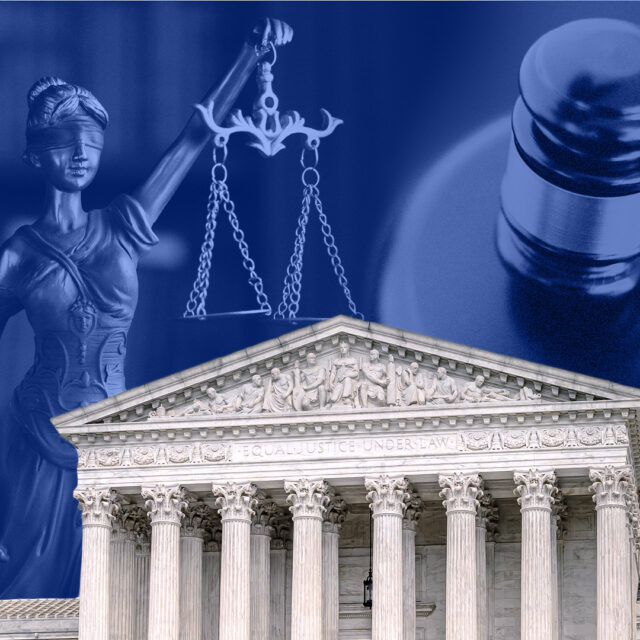Guide to Using Extreme Risk Orders to Save Lives
12.20.2024
As the daily news cycle continues to remind us, those in danger of seriously harming themselves or others often show advance warning signs. Extreme Risk laws empower community members to act on those signs. They authorize law enforcement, and sometimes family or other key community members, to work with the courts to temporarily remove a person’s guns during moments of crisis. If the court determines that the risk is high enough, it issues an order, often called an Extreme Risk Protection Order (ERPO), temporarily prohibiting the person from purchasing or possessing guns, thus giving them the time they need to seek help.
Extreme Risk laws exist at the state level. As of 2024, 21 states and the District of Columbia have Extreme Risk laws on the books—meaning that just over half the US population lives in a state with this policy.
The research is clear: these laws save lives. In California, the state that enacted the first comprehensive Extreme Risk statute, researchers followed nearly two dozen cases where the law was used to prevent a mass shooting and in every case, neither that mass shooting nor any other homicides or suicides involving the at-risk individual occurred. In Indiana, researchers estimated that one suicide was averted for approximately every 10 temporary gun removals carried out under the state’s Extreme Risk law, while another study in Connecticut found that increased enforcement of the state’s Extreme Risk law was associated with a 14 percent drop in gun suicide rates. And a multistate study found that one suicide was averted for every 17 ERPOs issued, which translates to 269 lives saved.1 Jeffrey W. Swanson et al., “Suicide Prevention Effects of Extreme Risk Protection Order Laws in Four States,” Journal of the American Academy of Psychiatry and the Law Online 52, no. 3 (August 2024), https://jaapl.org/content/early/2024/08/27/JAAPL.240056-24.
With the passage of the Bipartisan Safer Communities Act in 2022, the federal government has for the first time made much-needed funding available for these laws to be put into practice. Specifically, this act has allocated—as part of a larger gun safety package—$750 million to support state crisis intervention services such as Extreme Risk laws.
This federal government funding has enormous potential to help prevent gun violence—but only if states leverage it. This guide presents the state of play in the 21 states with Extreme Risk laws and lifts up examples of effective implementation of these laws.
How Are States Using Extreme Risk Laws?
States are increasingly looking to Extreme Risk laws as a helpful tool for preventing potential violence; yet, when it comes to the use of these laws, there is immense state-to-state variation. For instance, in 2023 the number of ERPOs filed in Florida per 100,000 people was over 9 times Delaware’s rate and over 5 times Colorado’s rate. Some states used this proactive, lifesaving tool multiple times per day in 2023 (including California, Connecticut, Maryland, and New York). Other states (see table below) had fewer than one petition filed per month.
Furthermore, within states, there is significant variation in uptake, with some counties filing many ERPOs, and others filing few or none at all. This is evident in states with relatively low overall rates of ERPO usage like Nevada, where only 41 percent of counties report ever having filed an ERPO. It is also true in states with relatively high overall rates of ERPO usage. In Washington state, just two counties were responsible for over 71 percent of the total ERPOs filed in the state in 2023, despite these counties accounting for only 40 percent of the population.
Number of Extreme Risk Petitions Filed by State and Year2Everytown for Gun Safety Support Fund, “Extreme Risk Laws Save Lives,” 2022.
| State | Year law took effect | Number of petitions filed in 2023 | Percent of counties with at least one Extreme Risk petition filed from 2018 through 2023 |
|---|---|---|---|
| California | 2016 | 2,703 | 91% |
| Colorado | 2019 | 182 | 70% |
| Connecticut | 1999 | 2,131 | 100% |
| Delaware | 2019 | 17 | 100% |
| District of Columbia | 2019 | 36 | — |
| Florida | 2018 | 3,522 | 94% |
| Hawaii | 2020 | 5 | 40% |
| Illinois | 2019 | 244 | 47% |
| Indiana | 2005 | 652 | 84% |
| Maryland | 2018 | 697 | 100% |
| Massachusetts | 2018 | 11 | — |
| Nevada | 2020 | 22 | 41% |
| New Jersey | 2019 | 678 | 100% |
| New Mexico | 2020 | 47 | 55% |
| New York | 2019 | 5,074 | 100% |
| Oregon | 2018 | 186 | 83% |
| Rhode Island | 2018 | 53 | 100% |
| Vermont | 2018 | 36 | 93% |
| Virginia | 2020 | 248 | 47% |
| Washington3Data is limited to Superior Court filings and does not include orders reported in lower courts at this time. | 2016 | 279 | 87% |
While there’s work to be done to ensure this tool is used, one thing is clear: Extreme Risk law champions are making a difference in their communities.
King County, Washington
Kimberly Wyatt, Senior Deputy Prosecuting Attorney for King County, Washington, has been outspoken about the need for thoughtful implementation of Extreme Risk laws. She emphasizes that these laws do not implement themselves. Her partners in law enforcement and the courts have worked to make the process more transparent to the public, creating step-by-step brochures that guide the public through all the laws and processes, establishing and publicizing a dedicated ERPO email contact for immediate connections to advocates and staff, and providing comprehensive webpages of commonly asked questions about ERPOs.
Wyatt has stressed the importance of bringing together all the relevant partners—including the county prosecutor’s office, city attorney, police department, sheriffs, clerk’s offices, and judges—to develop a uniform framework so that everyone is working off the same roadmap. Wyatt has emphasized the critical need for a clear process in place for when an emergency occurs.1Kimberly Wyatt video interview on Bloomberg American Health Initiative; live streamed convening on ERPO.
San Diego, California
A couple of states away is another powerful advocate of Extreme Risk laws—San Diego City Attorney Mara Elliot. Her unit has trained over 500 law enforcement agencies throughout the state, including in San Francisco and Sacramento, in how to recognize risky behavior and take steps to request an ERPO. They have expanded training to non-government agencies, schools, and medical and mental health professionals across the state, since under California’s law, a wider group of professionals can petition the court for temporary firearms removal, including employers and teachers. Experts working with Attorney Elliot urge states to consider mass education efforts, noting that gun-related matters are easily politicized and that it’s important for people to see these laws through the lens of public safety.
Attorney Elliot’s work has helped increase Extreme Risk law use across the state: from 2018 to 2023, the number of ERPO petitions filed in California increased by 538 percent.
ERPO Funding Can Make a Difference
Extreme Risk laws are civil processes that have helped defuse crises, keep guns out of dangerous situations, and prevent countless acts of gun suicide and would-be mass shootings. In other words, these laws have saved lives, but only when people know they exist and are equipped to use them. With thoughtful implementation, the funding from the Bipartisan Safer Communities Act can go a long way towards creating a safer, more secure America.



